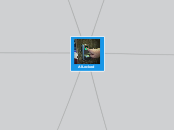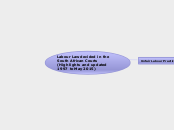Escapist
· Escapist – active & immersive. E.g., acting in a play, playing in a band.
Aesthetic
· Aesthetic – passive & immersive. E.g., visiting an art gallery, looking at the view.
Education
· Education – active & absorptive. E.g., attending a class, ski lesson.
Entertainment
Entertainment – passive & absorptive. E.g., TV, concerts
Connection
Immersive
Immersive – the customer is “inside” the happening. E.g., watching a movie in a cinema with other people while eating popcorn.
Absorption
Absorption – a certain distance between the experience event and the customer. E.g., watching a movie at home.
Customer participation
Passive
Passive participation – at the end of the spectrum, where customers don’t affect the performance at all. E.g., symphony listeners.
Actuve
Active participation – customers play a key role in creating the performance or event that yields the experience. E.g., skiers.
Charateristics of an experience
Designing memorable experiences
Engage all five senses
Engage all five senses – the sensory stimulants that accompany an experience should support and enhance its theme. The more senses an experience engages, the more effective and memorable it can be. However, not all sensations are good ones, and some combinations don’t work. None wants a drink by the gas station where it smells as gasoline.
Mix in memorabilia
Mix in memorabilia –certain goods have always been purchased primarily for the memories they convey. These goods generally sell at price points far above those commanded by similar items that don’t represent an experience. That’s because the price points are a function less of the cost of goods than of the value the buyer attaches to remembering the experience.
Eliminate negative cues
Eliminate negative cues – you must eliminate anything that diminishes, contradicts, or distracts from the theme. Overservicing – giving a poor service in the name of customer intimacy – can also ruin an experience. E.g., At hotels, front-desk personnel interrupt face-to-face conversations with guest to field telephone calls. By eliminating negative cues – by assigning off-stage personnel to answer phones– creates a more pleasurable customer experience.
Harmonise impressions with positive cues
Harmonize impressions with positive cues –impressions are the “takeaways” of the experience; they fulfil the theme. To create the desired impressions, companies must introduce cues that affirm the nature of the experience to the guest. Each cue must be consistent with the theme. When a restaurant host says, “your table is ready” no particular cue is given. When a Rainforest Café host declares, “your adventure is about to begin,” it sets the stage for something special. It’s the cues that make the impressions that create the experience in the customer’s mind.
Theme the experience
Theme the experience – the first step in engaging customers is creating a well-defined theme. One poorly conceived gives customers nothing around which to organize the impression they encounter, and the experience yields no lasting memory. An effective theme is concise and compelling, and must drive al design elements and staged events toward a unified story line that wholly captures the customer.
Implementation
Experience economy
While prior economic offerings are external to the buyer experiences are inherently personal, existing only in the mind of an individual who has been engaged on an emotional, physical, intellectual, or even spiritual level. No two experiences are the same, because each experience derives from the interaction between the staged event and the individual’s state of mind. But experiences are not exclusively about entertainment; companies stage an experience whenever they engage customers in a personal, memorable way.
Example: cab driver Iggy. He served sandwiches and drinks, conducted tours of the city, and even sang Frank Sinatra tunes. By engaging passengers in a way that turned an ordinary cab ride into a memorable event, Iggy created something else entirely: a distinct economic offering. Iggy’s customers happily responded by giving bigger tips. By asking to go around the block again, one patron even paid more for poorer service just to prolong his enjoyment. The service Iggy provided – taxi transportation – was simply the stage for the experience that he was really selling.
Disadvantages
Limits freedom and choice for both customer and employee
Environment
Bureaucracy
Dehumanizing
Theory X dominates
This management style assumes that the typical worker has little ambition, avoids responsibility, and is individual-goal oriented. In general, Theory X style managers believe their employees are less intelligent, lazier, and work solely for a sustainable income.
Management believes employee's work is based on their own self-interest.Managers who believe employees operate in this manner are more likely to use rewards or punishments as motivation.
Due to these assumptions, Theory X concludes the typical workforce operates more efficiently under a hands-on approach to management. Theory X managers believe all actions should be traceable to the individual responsible. This allows the individual to receive either a direct reward or a reprimand, depending on the outcome's positive or negative nature. This managerial style is more effective when used in a workforce that is not essentially motivated to perform.
Advantages
The most popular products of one culture are more easily diffused to others
Equal treatment, regardless of race, gender, or social class
Stable, familiar, safe environment offers comfort
Economical alternatives -> people can now afford things they could not previously
Uniform quality
Convenient and almost instantaneously
Availability on goods/services less dependent on geographic location
A wider range of goods and services are available to a much larger population than before
Efficiency
Efficency – The optimum method for getting from one point to another. McDonald offers the best available way to get from being hungry to being full, since the efficiency of a fast-food meal often proves impossible to resist in a stressed society. Predesigned processes with clear steps, organizational rules and regulations help ensure highly efficient work.
Control
Control through non-human technology – lines, limited menus, few options, and uncomfortable seats all lead diners to do what management wants them to do – eat quickly and leave. Furthermore, the drive-through window leads diners to leave before they even eat. Employees are also controlled: they are trained to do a limited number of things in precisely the way they are told to do them. Managers and inspectors make sure that workers toe the line. McDonald’s also controls employees by threatening o use, and ultimately using, technology to replace human workers.
Calculability
Calculability – emphasis on the quantitative aspects of product sold (portion, size, cost) and service offered (the time it takes to get the product). In McDonaldized systems, quantity has become equivalent to quality; a lot of something, or the quick delivery of it, means it must be good. The names of the product help make the customer feel like they’re getting a lot for their money’s worth (e.g., Big Mac, Double Whopper, Super-size fries).
Predictability
Predictability – an assurance that products and services will be the same over time and in all locales. McDonald’s offers no surprise. The employee behaviour is scripted, which helps create highly predictable interactions between workers and customers. While customers don’t follow scripts, they tend to develop simple recipes for dealing with the employees of McDonaldized systems.
McDonaldization
Disneyization
Disneyization – the process by which the principles of the Disney theme parks dominate more and more sectors of society. It is presented as comprising four aspects: theming, differentiation of consumption, merchandising, and emotional labour.
Disney theme parks are sites of McDonaldization too, at least if the model is applied broadly and not in the calculability dimension. Indeed, there is more to Disney parks then their being McDonaldized institutions. Further, we find that the McDonald’s fast-food restaurants are bearers of Dineyization in much the same way that Disney theme parks are bearers of McDonaldization. There are some that argue that it is Disney and its phenomenal success that has been most responsible for bringing the principles of McDonaldization to the tourist industry.
Dimensions
Merchandising
Promoting goods or services with objects bearing promotional images or logos.
Thus, theme parks have become major vehicles for merchandising. It can be seen as cross-promotion, or as being part of “an endless round of self-referential co-advertisements.” Over the years, it has become increasingly apparent that more money can be made from feature films through merchandising and licensing than from box office receipts and such.
Provide own merchandise
This occurs in a number of ways, including: t-shirts we the name of the park on them, souvenirs, merchandise deriving from characters specifically associated with the parks.
Provide points for selling
They sell a vast away of Disney merchandise that has accumulated over the years: pens, clothing, books, sweets, watches, and plush toys. Sales from merchandise are a major contributor to profits from the parks. The parks are carefully designed to maximize the opportunity for and inclination of guests to purchase merchandise.
Theming
Infusing a place or object with a particular idea.
Differentiation strategy
Most amusement parks were loose assemblages of rides of various degrees of thrill. Thus, the very process of theming was central to Disney’s product differentiation strategy, and accomplished at east two things in this connection:
Establishing coherence
Establishing coherence – to the various rides and attractions in Disneyland and the environments they were located.
Design focus
Design focus – in the design of rides and attractions, the accent was placed on their theming rather than their thrill factor, which was the standard procedure in other amusement parks at that time. Rather than presenting a random collection of roller coasters, merry-go-rounds and Ferris wheels in a carnival atmosphere, theme parks are divided into distinct areas called “lands” in which a selected theme is presented through architecture, landscaping, costuming, music, live entertainment, attractions, merchandise, and food and beverage.
Tools
Optimism for the future
“The older generation can recapture the nostalgia of days gone by, and the younger generation can savour the challenge of the future.”
An environment for both adults and children
Disney noticed that many parents were like him and only frequented these parks to appease their children. He felt that it should be possible to create an environment which adults would be just as keen to visit as children.
Nostalgia
Disneyland was conceived as a celebration of America’s past
Emotional labour
Making employees not only providers of services, but also entertainers.
The focus of this aspect is about controlling the behaviour of the employees. The behaviour of Disney theme park employees is control in a number of ways, where control through scripted interactions and encouraging emotional labour is one of the key elements. The friendliness and helpfulness of Disney theme park employees is renowned and expected. The ever-smiling Disney employees have become a stereotype of modern culture. Their demeanour, coupled with the distinctive Disney language, is designed among other things to convey the impression that the employees are having fun too and therefore not engaging in real work.
Dedifferentiation of consumption
A collection of multiple consumption opportunities in a particular location.
“The more needs you fulfil, the longer people stay.”
Walt Disney realised at a very early stage that Disneyland had a great potential as a vehicle for selling food and various goods. Disney theme parks are full of shops and restaurants to the extent that many writers argue that their main purpose is precisely the selling of variety of goods and food. Disney has learned to optimise the mix of merchandise in stores within its theme parks, which consequently are highly profitable and achieve some of the highest sales per square metre for retail stores in the US.
Examples
Museums force you to walk through shop
Airports with mini-malls
Shopping malls build theme parks
Examples in Disneyland
Increase the number of guests staying in its hotels by emphasizing their advantages over non-Disney accommodations
Several “lands” that represent countries do not containing attractions at all, but they have at least one restaurant and one shop
Visitors are forced to go through a store to exit an attraction









